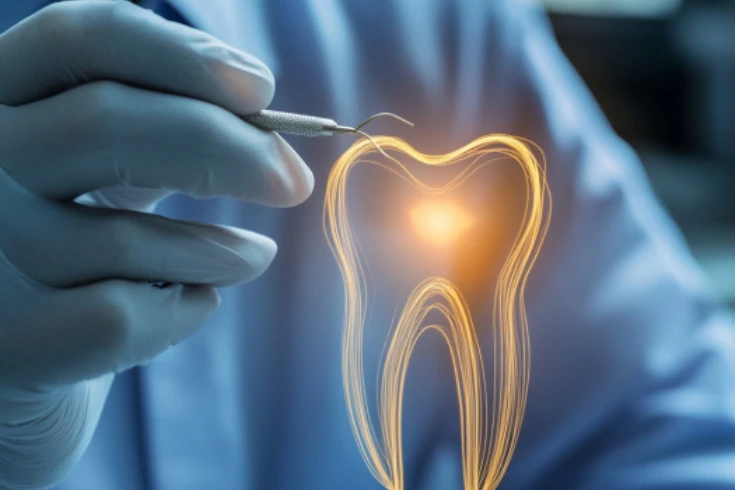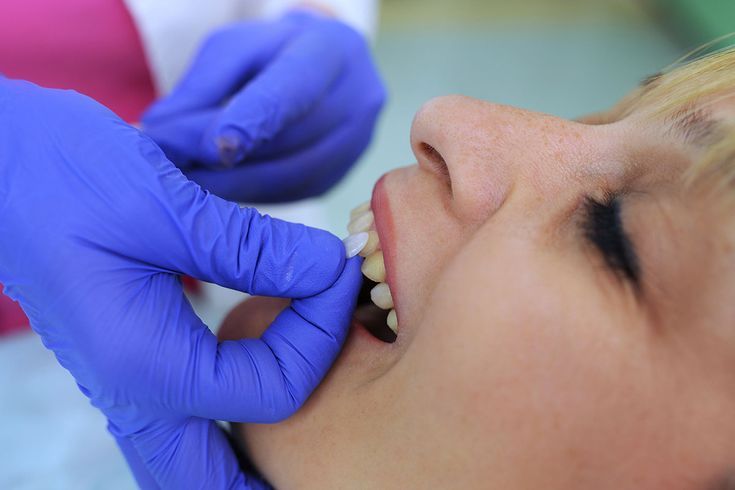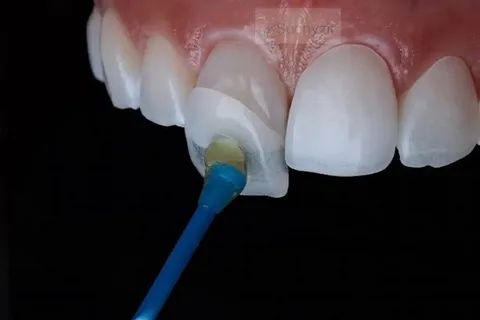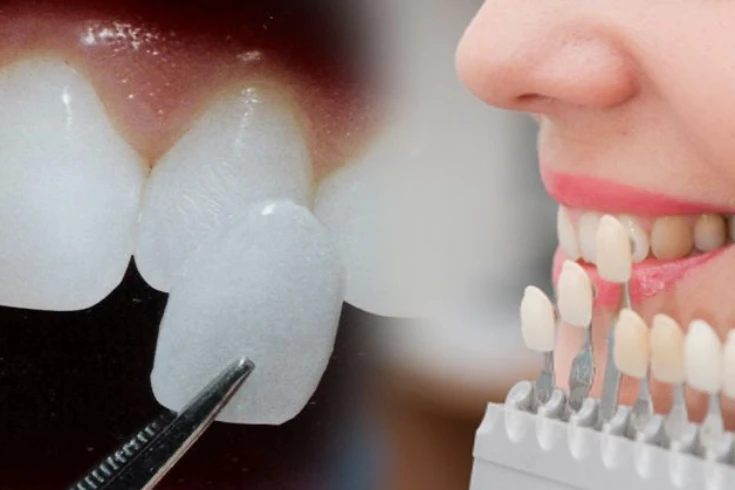Root canal treatment is one of the most popular dental procedures designed to save teeth that are severely decayed or infected. While the procedure itself is critical, what you do afterward is just as important. Proper post-treatment care can prevent complications, ensure a speedy recovery, and extend the life of your treated tooth. This blog will guide you from Root Canal Procedute to Tips for caring Root Canal.
What is a Root Canal?
It is a dental procedure where the infected or damaged pulp is removed inside a tooth. The pulp consists of nerves, blood vessels, and connective tissue. Therefore, when a pulp gets infected due to deep decay, repeated dental procedures, or a crack in the tooth, it causes intense pain and leads to abscesses. The tooth can be saved and function generally by removing the infected pulp, cleaning the root canal, and sealing it.
Common Reasons for Need a Root Canal Treatment
- Deep Decay: A root canal is needed when tooth decay penetrates deep into the tooth, reaching the pulp. The root canal removes the infection and prevents further damage.
- Repeated Dental Procedures: Performing dental procedures on the same tooth multiple times weakens the tooth structure. This exposes the pulp to bacteria, leading to infection.
- Cracked or Chipped Teeth: If a tooth is cracked or chipped, the bacteria can easily enter the pulp, leading to infection.
- Injury to the Tooth: Trauma to the tooth, even if it doesn’t crack the tooth, can damage the pulp, necessitating a root canal.
The Root Canal Procedure Explained
Before getting the root canal, you should know how the procedure works. Understanding how the procedure is carried out will help to alleviate anxiety and prepare you for the process:
- Diagnosis: First, the dentist will examine the extent of the infection.
- Anesthesia: After agonizing, the dentist will apply local anesthesia to numb the affected tooth and surrounding area, ensuring a pain-free experience.
- Pulp Removal: The dentist will open the tooth’s crown to access the infected pulp, which is then carefully removed.
- Cleaning and Shaping: The inside of the tooth, including the root canals, is cleaned and shaped to prepare for filling.
- Filling: The cleaned space is filled with a biocompatible material, typically gutta-percha, to seal the canals and prevent future infection.
- Sealing: The dentist will seal the tooth with a temporary or permanent filling; in many cases, a crown is placed to protect the tooth from further damage.
Pre-Treatment Tips for caring Root Canal
Choosing the Right Dentist or Endodontist
- Specialization: Opt for a dentist specializing in endodontics, as they have advanced training in root canal procedures.
- Experience: Look for a professional with a proven track record in performing root canals successfully.
- Technology: Ensure the dentist uses modern equipment, such as digital X-rays and microscopes, which enhance the accuracy and success of the procedure.
- Reviews and Referrals: Read patient reviews and ask for recommendations from people you trust to find a reputable practitioner.
Preparing Mentally and Physically for the Procedure
- Understand the Process: Educate yourself about the root canal procedure to alleviate fears or anxiety. Knowing what to expect can make the experience more manageable.
- Oral Hygiene: Brush and floss your teeth thoroughly before your appointment to reduce the risk of infection during the procedure.
- Rest: Get plenty of rest the night before your appointment to ensure you’re physically and mentally prepared.
- Clear Your Schedule: Avoid planning strenuous activities or essential tasks immediately after the procedure, as you may need time to rest and recover.
Finding Affordable Root Canal Treatment in Missouri: A Comprehensive Guide
What to Expect During the Treatment
- Duration: The procedure typically takes 60 to 90 minutes, depending on the case’s complexity.
- Sensation: Thanks to local anesthesia, you’ll feel pressure but no pain during the procedure.
- Post-Treatment Care: The dentist will instruct you on how to care for your tooth after the root canal.
Immediate Post-Treatment Care
Managing Pain and Discomfort
- Pain Relief: After the anesthesia wears off, mild discomfort or tenderness in the treated area is common. Over-the-counter pain relievers such as ibuprofen or acetaminophen can help manage this discomfort.
- Cold Compress: If you experience swelling or tenderness, apply a cold compress outside your cheek for 15-20 minutes at a time. This can help reduce swelling and numb the area.
- Rest: Take it easy 24-48 hours after your root canal. Avoid strenuous activities that could increase blood flow to the area and exacerbate swelling.
Medications and Their Importance
- Antibiotics: If prescribed antibiotics, it’s crucial to take them as directed to prevent or treat any lingering infection.
- Pain Medication: Take any prescribed pain medication exactly as directed. If using over-the-counter options, follow the recommended dosage instructions.
- Anti-Inflammatories: Medications like ibuprofen also help reduce inflammation, aiding recovery.
Dietary Restrictions and Suggestions
- Soft Foods: You should only eat soft, easy-to-chunk foods. This reduces the risk of damaging the treated tooth or irritating the surrounding tissue.
- Avoid Hard or Crunchy Foods: You should completely avoid hard or crunchy foods like nuts, chips, and raw vegetables. Having these foods may crack or chip the treated tooth.
- Temperature Sensitivity: Be cautious with very hot or cold foods, as the treated area may be more sensitive to temperature extremes.
Importance of Follow-Up Appointments
- Healing Check-Up: A follow-up visit allows the dentist to check the healing progress and ensure the root canal has been successful.
- Crown Placement: If your dentist recommends a crown to protect the treated tooth, they typically place it during a follow-up appointment.
- Address Concerns: During this visit, you should discuss any concerns or symptoms you face with the dentist, such as lingering pain or sensitivity.
Long-Term Tips Care for a Root Canal
Maintaining Oral Hygiene
- Brushing: Brushing your teeth is very important to maintain oral hygiene. It would help to brush your teeth at least twice daily with a soft-bristled toothbrush. Be gentle around the treated area initially to avoid irritation.
- Flossing: Pay special attention to the treated tooth daily to remove food particles and plaque between your teeth.
- Mouthwash: Use an antiseptic to help keep the area clean and reduce the risk of infection.
The Role of Regular Dental Check-Ups
- Routine Visits: Regular dental check-ups every six months are essential for monitoring the health of your treated tooth and overall oral health.
- X-rays: Your dentist may take periodic X-rays of the treated tooth to ensure there are no signs of infection or other issues.
- Professional Cleaning: Professional cleanings help remove plaque and tartar, reducing the risk of decay and gum disease.
Recognizing Signs of Complications
- Persistent Pain: If you experience ongoing pain weeks after the procedure, this could be a sign of a problem that needs addressing.
- Swelling or Infection: Swelling, pus discharge, or fever could indicate an infection, which requires immediate attention.
- Loose Filling or Crown: If your filling or crown feels loose or falls out, contact your dentist immediately to have it repaired.
Protecting the Treated Tooth from Damage
- Dental Crown: If your dentist recommends a crown, getting one can protect the treated tooth from fractures and further decay.
- Avoid Hard Foods: Avoid using the treated tooth to chew hard foods even after the initial healing period.
- Mouthguard for Grinding: If you grind your teeth at night, wearing a mouthguard can prevent damage to your teeth, including the treated tooth.
Dietary Considerations
Foods to Avoid Post-Treatment
- Crunchy and Hard Foods: Nuts, popcorn, and hard candies can crack or damage the treated tooth, especially if a temporary filling is in place.
- Sticky Foods: Gum, caramel, and other sticky foods can dislodge the filling or crown, causing complications.
- Acidic Foods: Avoid foods that have acids, as they will irritate the treated area and potentially weaken the enamel.
Foods That Promote Healing
- Soft Proteins: Foods like eggs, fish, and soft tofu are easy to eat and provide the protein necessary for tissue repair.
- Hydrating Foods: Soups, smoothies, and other hydrating foods help keep you nourished without straining your teeth.
- Calcium-rich foods: Dairy products, leafy greens, and fortified alternatives support strong teeth and bones.
How Diet Affects the Longevity of the Root Canal
- Balanced Diet: A diet rich in vitamins, minerals, and calcium supports overall oral health and reduces the risk of future problems.
- Limit Sugar Intake: Sugar contributes to tooth decay, affecting the treated and surrounding teeth. Limit sugary snacks and drinks.
- Hydration: Staying well-hydrated helps maintain saliva production, which protects teeth from decay.
Dealing with Complications
Common Complications After a Root Canal
- Persistent Pain: Some discomfort is normal, but if the pain persists or worsens, it could indicate a problem.
- Infection: Signs of infection include swelling, redness, fever, and discharge from the treated area.
- Tooth Fracture: Without a crown, the treated tooth may be more prone to fractures.
When to Seek Immediate Help
- Severe Pain: If you are having severe pain that doesn’t respond to over-the-counter pain relievers, contact your dentist as soon as possible.
- Swelling or Fever: Swelling, fever, or a feeling of pressure around the treated area could indicate an infection requiring urgent care.
- Dislodged Filling or Crown: If your filling or crown falls out, it’s crucial to see your dentist as soon as possible to prevent damage to the tooth.
Preventing Future Issues
- Prompt Treatment: If any dental issues arise, you should immediately visit the dentist to prevent them from worsening and potentially leading to another root canal.
- Oral Hygiene: Maintain excellent oral hygiene to prevent decay and gum disease, which can affect the treated tooth.
- Regular Check-Ups: Keep up with regular dental visits to catch any potential issues early.
Conclusion
To ensure the longevity of your treated tooth and maintaining overall oral health, proper care after a root canal is vital. By following the guidelines outlined in this blog, you can confidently navigate the post-treatment period, avoiding complications and enjoying the benefits of your restored tooth. Remember, regular dental check-ups and a commitment to oral hygiene are your best allies in preserving the results of your root canal and preventing future issues.
Frequently Asked Questions (FAQs)
How long does a root canal last?
A root canal can last a lifetime with proper care, but regular check-ups are essential to ensure the treated tooth remains healthy.
Is it normal to feel pain after a root canal?
Mild discomfort is normal, but your dentist should evaluate severe or persistent pain.
Can I eat normally after a root canal?
Initially, you should stick to soft foods, but once the tooth has healed and a permanent crown is in place, you can resume a regular diet with some precautions.
Do I need a crown after a root canal?
It is better to have a crown after a root canal as it protects the treated tooth from fractures and further decay.
What should I do if my tooth hurts months after the procedure?
If you experience pain or discomfort long after a root canal, contact your dentist, which may indicate a complication.





